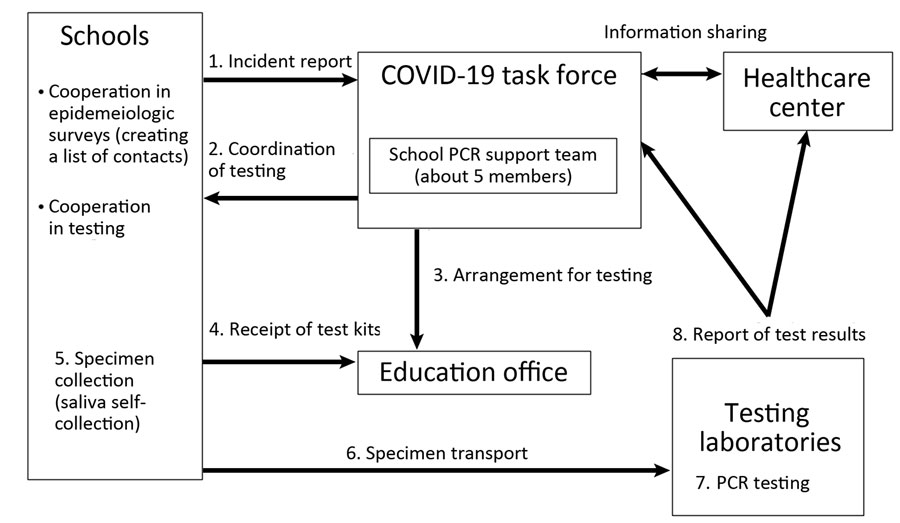Volume 30, Number 11—November 2024
Research
SARS-CoV-2 Infection in School Settings, Okinawa Prefecture, Japan, 2021–2022
Figure 1

Figure 1. Overview of the SARS-CoV-2 PCR project conducted in school settings, Okinawa Prefecture, Japan, 2021–2022. The school’s PCR Project protocol begins when the Prefectural COVID-19 Task Force is notified of a SARS-CoV-2 infection in a student. The prefectural school PCR support team will arrange for testing, with students providing saliva samples through self-collection of saliva. School officials receive test containers from the education office and transport the specimens to the testing laboratories. Contacts are generally all children or students in the class with a positive case, and close contacts are those within 1 meter from the index case-patient for >15 minutes without appropriate infection control measures.
Page created: October 02, 2024
Page updated: October 22, 2024
Page reviewed: October 22, 2024
The conclusions, findings, and opinions expressed by authors contributing to this journal do not necessarily reflect the official position of the U.S. Department of Health and Human Services, the Public Health Service, the Centers for Disease Control and Prevention, or the authors' affiliated institutions. Use of trade names is for identification only and does not imply endorsement by any of the groups named above.